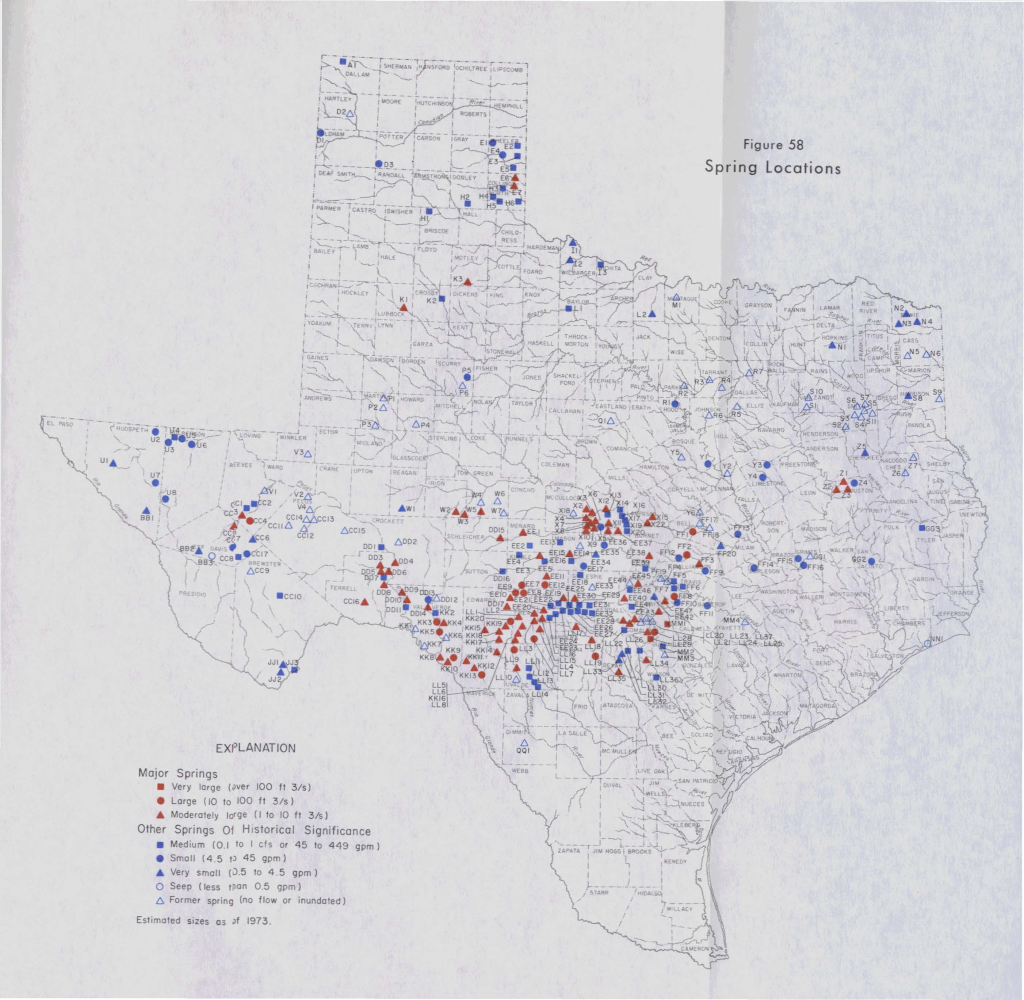WHERE GROUNDWATER MEETS THE SURFACE:THREE ICONIC SPRINGS
Published May 23, 2023 by Julia Stanford
Springs are the magical place at which groundwater meets the surface – where the “secret, occult, and concealed” is revealed to the world. The great state of Texas is home to thousands of springs, with nearly 300 of them considered major or historically significant. But in our eyes, every spring is significant. Read below to learn about three beloved springs throughout the state.
San Solomon Springs
An oasis in the West Texas desert, the San Solomon Springs System consists of six springs around the tiny town of Balmorhea in Reeves County. Estimated sources of these springs include discharge from the Apache, Delaware, and Davis mountain ranges. San Solomon Springs’ claim to fame is serving as the source of the world’s largest spring-fed pool. The pool in Balmorhea State Park covers 1.3 acres and is up to 25 feet deep. The crystal clear waters are enjoyed by over 200,000 visitors each year. Today, the historic Civilian Conservation Corps-era pool is managed by the Texas Parks & Wildlife Department, but its roots go back centuries. Jumano natives settled near several springs in this system in the 1500s and used the spring water to irrigate crops such as corn and peaches. The Apache people followed suit and later American and Mexican settlers were drawn to the fertile lands and open range.
Greg Perrin fell in love with the springs and local caves in the 1970s. Now he works tirelessly in his role as General Manager of Reeves County GCD to understand and protect the water underground to keep the springs flowing for generations to come. The district continues to research and collect data on the quantity and quality of water within the springs system. To learn more about the San Solomon Springs, you can explore an interactive storymap from the Environmental Defense Fund and WaterPR here.



Boykin Springs
Described by a local author as “a masterpiece of nature’s components of water, trees, and rocks to form a superb recreation area,” Boykin Springs is the centerpiece of an idyllic park in Deep East Texas. The Boykin Springs Recreation Area is in the Angelina National Forest in Jasper County. Towering longleaf pine trees surround the quaint springs and the adjacent 5.5-mile Sawmill Hiking Trail. Visitors to the property can also swim, picnic, camp, or fish at Boykin Spring Lake. Immerse yourself in the spring’s tranquility by watching the video to the left, and visit the US National Forest service website here.
Comal Springs
 Comal Springs are the largest concentration of springs in Texas. Ironically, the springs are also the headwaters of the shortest navigable river in the state, the Comal River. Bounding from the Edwards Aquifer hundreds of feet below, the Comal Springs system consists of seven major and dozens of minor springs spread throughout and around Landa Park in New Braunfels. In this beautiful city park, the spring waters feed Landa Lake and a large swimming pool.
Comal Springs are the largest concentration of springs in Texas. Ironically, the springs are also the headwaters of the shortest navigable river in the state, the Comal River. Bounding from the Edwards Aquifer hundreds of feet below, the Comal Springs system consists of seven major and dozens of minor springs spread throughout and around Landa Park in New Braunfels. In this beautiful city park, the spring waters feed Landa Lake and a large swimming pool.
Comal Springs are not just all for play, though – after New Braunfels was established in 1845, settlers put the springflow to work. By 1860, seven grist, flour, or sawmills were drawing from the power of the springs. To this day, the Comal River has a significant economic impact on the economy of the area as a legendary tourism destination. Thousands of visitors tube the Comal each year to enjoy the crystal clear 72-degree spring water, thanks to the prolific Comal Springs.
During your summer travels, you may find yourself gazing upon one of these or the dozens of other accessible freshwater springs throughout our great state. Consider taking a dip to soak up the majesty of this vital natural resource. From recreation to irrigation to wildlife habitat, the positive impacts of sound groundwater management are immeasurable and invaluable.

